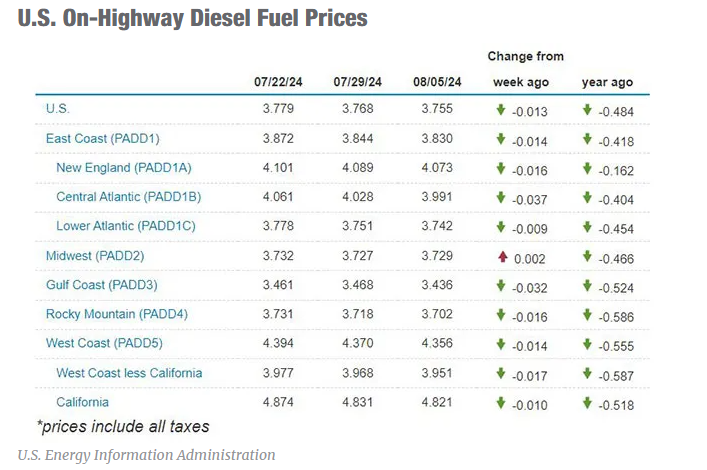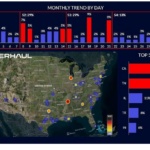The national average diesel price fell by 1.3 cents to $3.755 per gallon, based on data from the Energy Information Administration released on August 5.
Key Points
- Weekly Trend: The national average price of diesel has decreased for the past four weeks, accumulating a total drop of 11 cents.
- Yearly Comparison: Diesel is now 48.4 cents cheaper per gallon compared to the same time last year.
- Regional Variations: In the EIA’s weekly survey, diesel prices decreased in all but one region. The Central Atlantic had the largest drop of 3.7 cents, while the Midwest saw a slight increase of 0.2 cent.
- Gasoline Update: The national average price for a gallon of gasoline decreased by 3.6 cents to $3.448, which is 38 cents less than it was a year ago.

Regional Price Dynamics
- East Coast (PADD 1): Diesel prices in the East Coast region decreased by 1.4 cents, averaging $3.830 per gallon. Within this area:
- New England’s price dropped by 1.6 cents to $4.073.
- The Central Atlantic saw a decline of 3.7 cents to $3.991.
- The Lower Atlantic experienced a 0.9 cent decrease to $3.742.
- Midwest (PADD 2): The Midwest region had a slight increase of 0.2 cent, bringing the average price to $3.729 per gallon, indicating relative stability over the past week.
- Gulf Coast (PADD 3): The Gulf Coast region’s average price fell by 3.2 cents to $3.436 per gallon, making it the region with the lowest average diesel price in the country.
- Rocky Mountain (PADD 4): Prices in the Rocky Mountain region decreased by 1.6 cents, averaging $3.702 per gallon.
- West Coast (PADD 5): The West Coast region saw a reduction of 1.4 cents, bringing the average price to $4.356 per gallon. Specifically:
- California’s prices fell by 1 cent to $4.821.
- The West Coast excluding California experienced a decrease of 1.7 cents to $3.951.

Summary This downward trend provides some relief to the transportation and logistics sectors, which continue to cope with fluctuating fuel costs amidst broader economic conditions. The current trend suggests a favorable environment for diesel consumption, though market dynamics remain vulnerable to changes influenced by global energy policies and supply chain factors.





